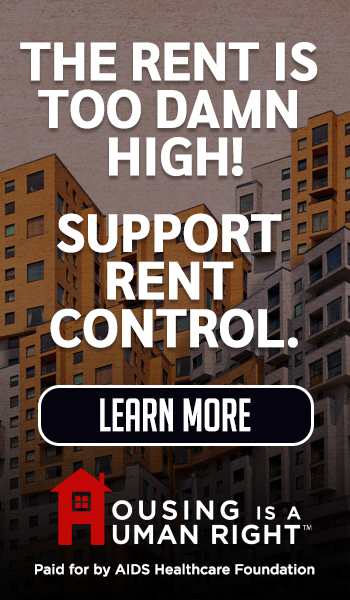Comments
iAUDIT! - For the better part of the past two years, there has been an ongoing struggle to clear illegal encampments and RV parking in and around Westchester Park, (where, with some irony, Councilmember Park’s field office is located). The population of tents grows and falls from one week to another, while several RV’s seem to shift location but never disappear. Along with the encampments, park patrons have reported problems like public urination, violent behavior, (usually homeless-on-homeless), excessive trash, and human and other hazardous waste. Local residents have made repeated and constant requests to have the park cleared of encampments. City staff typically reply that efforts have been made, but homelessness is a persistent problem, and the city’s resources are limited. More than once, the response to resident requests has been “we are doing our best to manage the park’s homeless population”. And therein lies the problem.
A truly effective program would seek not to “manage” homelessness, but to reduce and, hopefully, eliminate it. Unfortunately, homelessness programs, especially in Los Angeles, have focused more on process, specifically on the processes supporting Housing First principles, and relied on rhetoric instead of results. As researcher Stephen Eide wrote in “Housing First and Homelessness: The Rhetoric and the Reality, “But no community has truly ended homelessness using Housing First, and certainly not any community facing crisis-level homelessness. We would not say that a community has ended murder based upon a qualitative analysis of its police department, but rather the absence of murder. If ending homelessness must remain the goal of homelessness policy, governments should define success in a way that can be independently verified by the public”. In other words, the success of homelessness programs should be measured by how well they reduce homelessness.
In reality, Housing First is not structured to end homelessness; at best it merely moves it inside. Intentionally or unintentionally, it traps people in an endless cycle of streets to shelter to housing and back to the streets, while providers, especially large corporate nonprofits, collect hundreds of millions of taxpayer dollars for completing processes that do nothing to reduce homelessness. Once in the shelter/housing system, clients are entirely dependent on that system. And the system is designed in such a way that it keeps them dependent, potentially for life. Let’s follow a hypothetical unhoused person through the shelter/housing process. For the moment, let’s also accept advocates’ argument that mental illness is a consequence, rather than a cause, of homelessness, and our hypothetical client suffers from persistent depression. It may take many contacts for an outreach team to convince the person to enter a shelter, with the provider being paid for each encounter. Once someone enters a shelter, he or she should be assessed and receive services appropriate to their needs. We know that’s not happening, as documented in a 2024 survey of unhoused people by a coalition of advocacy groups and by the court-ordered assessment of LA’s homelessness programs by Alvarez & Marsal, (A&M). The 2024 survey showed nearly half of Inside Safe clients have received no services of any kind, and only about 25 percent have received mental health services. A&M found inconsistent services and chronic understaffing in many shelters.
For the sake of argument, let’s suppose our hypothetical client is among the lucky two in ten shelter occupants who transfer to permanent housing. Using numbers from the City Controller’s homelessness spending website, of the 1,144 people moved from Inside Safe to housing, 422 (37 percent) are in time-limited subsidized (TLS) housing. Another 322 (28 percent) are in permanent supportive housing and about the same number are in other types of subsidized housing. This means about 93 percent of housed Inside Safe clients are in some form of government-subsidized housing. Only 37 people (3.2 percent) have exited to unsubsidized housing. Therefore, that 93 percent continue to rely on government-provided housing, without which they would be homeless. The 37 percent in TLS housing are in the most tenuous position; although HUD considers them “housed”, TLS programs only pay for about two years of rent. Unless someone is financially stable enough to pay for rent, he or she has a high risk of falling back into homelessness.
For now, let’s assume our hypothetical client is in permanent supportive housing (PSH) because he or she has mental health issues caused by being unhoused. PSH is intended to allow someone to live as independently as possible while receiving supportive mental health and other services. Here’s where we run into a major factor that makes people dependent on public housing for life. Housing First is almost always paired with Harm Reduction/No Barrier policies, where clients are not required to commit to any type of treatment as a condition of obtaining or remaining in housing. These policies create a lopsided system where a person, regardless of his or her behavior, has very little risk of being forced out of a housing unit. As social researcher Devon Kurtz points out, the unconditional guarantee of housing for life provides no incentive for that person to seek treatment. While the client may be housed in the physical sense, no reasonable person would define him or her as achieving permanent housing in the social or human sense. Without indefinite government support, that person would be homeless.
As with other homelessness services, PSH programs’ goals and their actual outcomes often differ. As shown in a 2023 report from the L.A. Alliance for Human Rights (which I helped write), County mental health and drug addiction programs have consistently failed to meet the needs of the unhoused community, both on the streets and in housing. Many people are left stranded in hotel rooms or spartan apartments without the support they need. The personal costs of the system’s failures are described in heartbreaking detail by the story of Brian, a friend of All Aspect Report publisher Christopher LeGras. Brian, an unhoused person tormented by mental health problems and alcohol addiction, was dropped into a sparse apartment with virtually no support services. To make matters worse, his apartment overlooked a pub, where he was tortured by the sounds of people socializing and drinking. Small wonder then, after just a few months, Brian was back on the streets.
As the studies by Eide and Kurtz show, the real effect of Housing First isn’t to house people--its to warehouse them, many for life. Housing First programs offer few services to support clients’ independent living. Unlike Union Rescue Mission and similar providers, most Housing First programs offer no life skills training or lessons on how to live outside of supported housing. Rather than reducing homelessness, Housing First is creating a permanent underclass of thousands of people entirely dependent on government housing.
Housing First has no exit strategy. As Eide reported, few programs include an evaluation mechanism to determine when someone may be ready to leave subsidized housing. Combined with No Barrier policies, the lack of ongoing evaluation means people are trapped in subsidized housing with no incentive to leave, and without the skills they need to live independently if they want to leave. They are also at the mercy of the vagaries of public funding. As a recent Westside Current article describes, state and local funding is beginning to shrink, putting new construction projects at risk. (Notwithstanding the miserable job the City and County have done filling the housing they have already created).
The result is a system that has no outlet. More and more people enter the system, but few leave it. This, in turn, means the only way to reduce unsheltered homelessness is to constantly increase capacity, in the form of more subsidized housing. But public resources are not infinite, and government cannot endlessly build housing to accommodate a homeless population that never decreases. As Eide said at the end of his study, “Someone placed in permanent supportive housing may have ended his homelessness, but he is only managing his poverty”. Government-subsidized housing has its place in homelessness and housing policies, but it cannot be a goal unto itself, unless we are willing to accept tens of thousands of our fellow Angelenos trapped in a system where they are robbed of their individuality and ability to live the lives they choose.
(Tim Campbell is a longtime Westchester resident and veteran public servant who spent his career managing a municipal performance audit program. Drawing on decades of experience in government accountability, he brings a results-driven approach to civic oversight. In his iAUDIT! column for CityWatchLA, Campbell emphasizes outcomes over bureaucratic process, offering readers clear-eyed analyses of how local programs perform—and where they fall short. His work advocates for greater transparency, efficiency, and effectiveness in Los Angeles government.)






